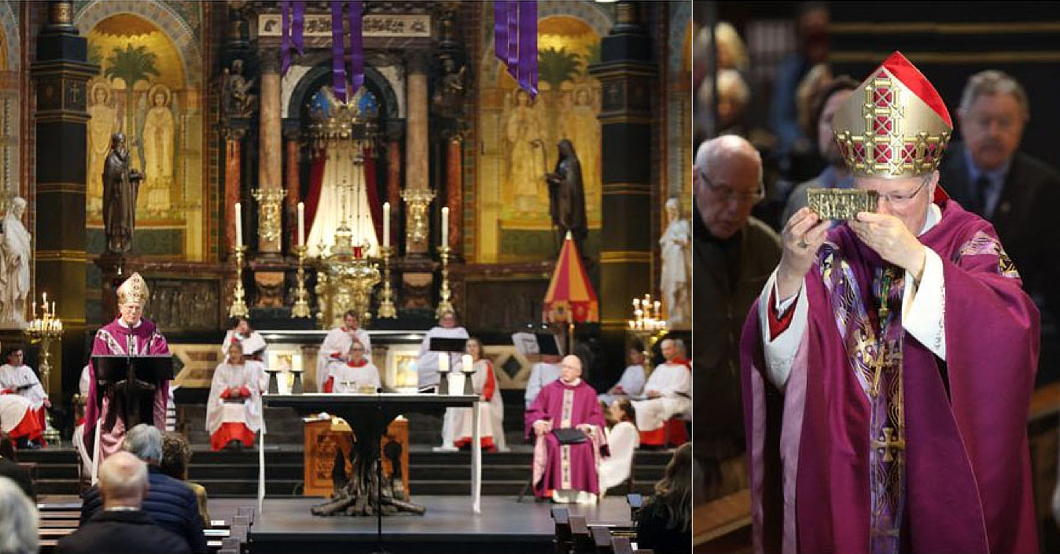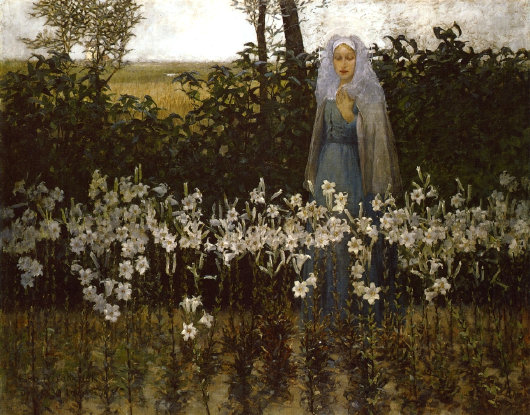Saints
About Andrew Cusack
 Writer, web designer, etc.; born in New York; educated in Argentina, Scotland, and South Africa; now based in London.
Writer, web designer, etc.; born in New York; educated in Argentina, Scotland, and South Africa; now based in London. read more
News
Blogs
Reviews & Periodicals
Arts & Design
World
France
Mitteleuropa
Knickerbockers
Argentina
The Levant
Africa
Cape of Good Hope
Netherlands
Scandinavia
Québec
India
Muscovy
Germany
Academica
Celebrating Saint Nicholas in New York
As any fool knows, the great city of New York has as its patron and protector a great and holy saint, the wonderworker Nicholas of Myra (AD 270-343).
A great city and a great saint merit a great feast, and since 1835 the Society of Saint Nicholas in the City of New York has risen to the task of commemorating the holy bishop as well as rendering honour to our Dutch forefathers of old who founded New Amsterdam in the colony of New Netherland where the waters of the Hudson meet the Atlantic Ocean.
Blustering through the archives, it is rewarding to read of how this feast has been kept over the years.
This little snippet from The New York Times relays the St Nicholas Society’s feasting in 1877:
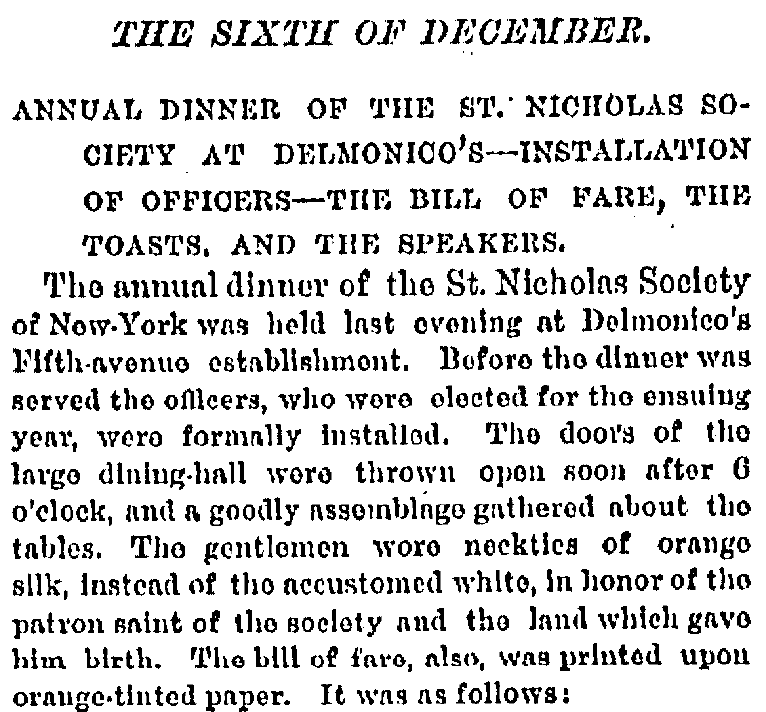
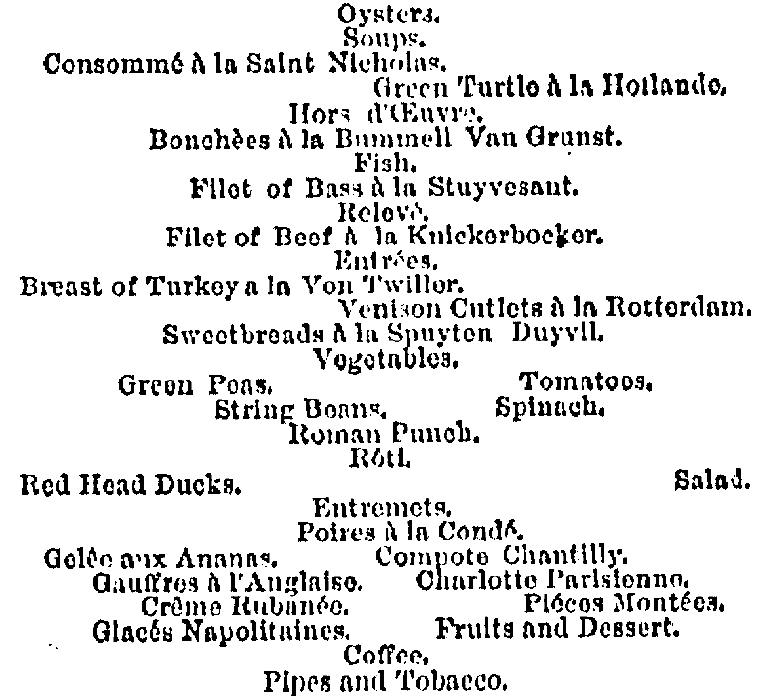
Sounds like quite a meal, but it was followed by toasts and responses appropriate to St Nicholas Day and to the city:
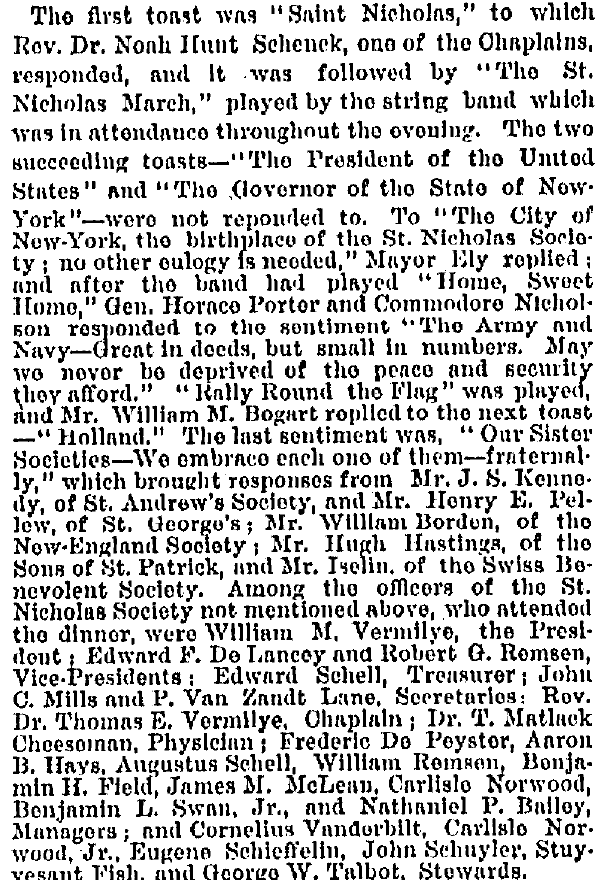
Just over a decade later in 1888, the Times again gives its report on what sounds like an amusing evening:
After an elaborate dinner had been discussed and as the coffee and long clay pipes were handed around, the old weathercock that Washington Irving gave the society was brought in and placed at its post of honor before the President, and the toast-making was begun. Austin G. Fox replied to the toast “Saint Nicholas,” and paid an eloquent tribute to the memory of W. H. Bogart of Aurora, N.Y., who had answered that sentiment at nearly every previous dinner.
The toast “The President of the United States” was drank standing and was lustily cheered. Ex-Judge Henry E. Howland made a witty response to “The Governor of the State of New-York,” touching upon every other imaginable subject but the one to which he was to respond, and James C. Carter responded to “Our City.” The Rev. Dr. J.T. Duryea spoke to “Holland,” and Warner Miller, in the absence of Gen. Sherman, replied to “The Army and Navy.” Joseph H. Choate made a characteristic reply to “The Founders of New-Amsterdam.”
The newspaper further relates that: “At the request of the St. Nicholas Society, Mayor Hewitt had flags displayed on the City Hall yesterday in honor of the festival of St. Nicholas, the patron of this city.”
In 1907, the Society’s members and guests marched into dinner at Delmonico’s two-by-two, preceded by a trumpeter and twelve servants “clad in the black and orange liveries of early Holland” escorting the newly elected president, Col. William Jay.
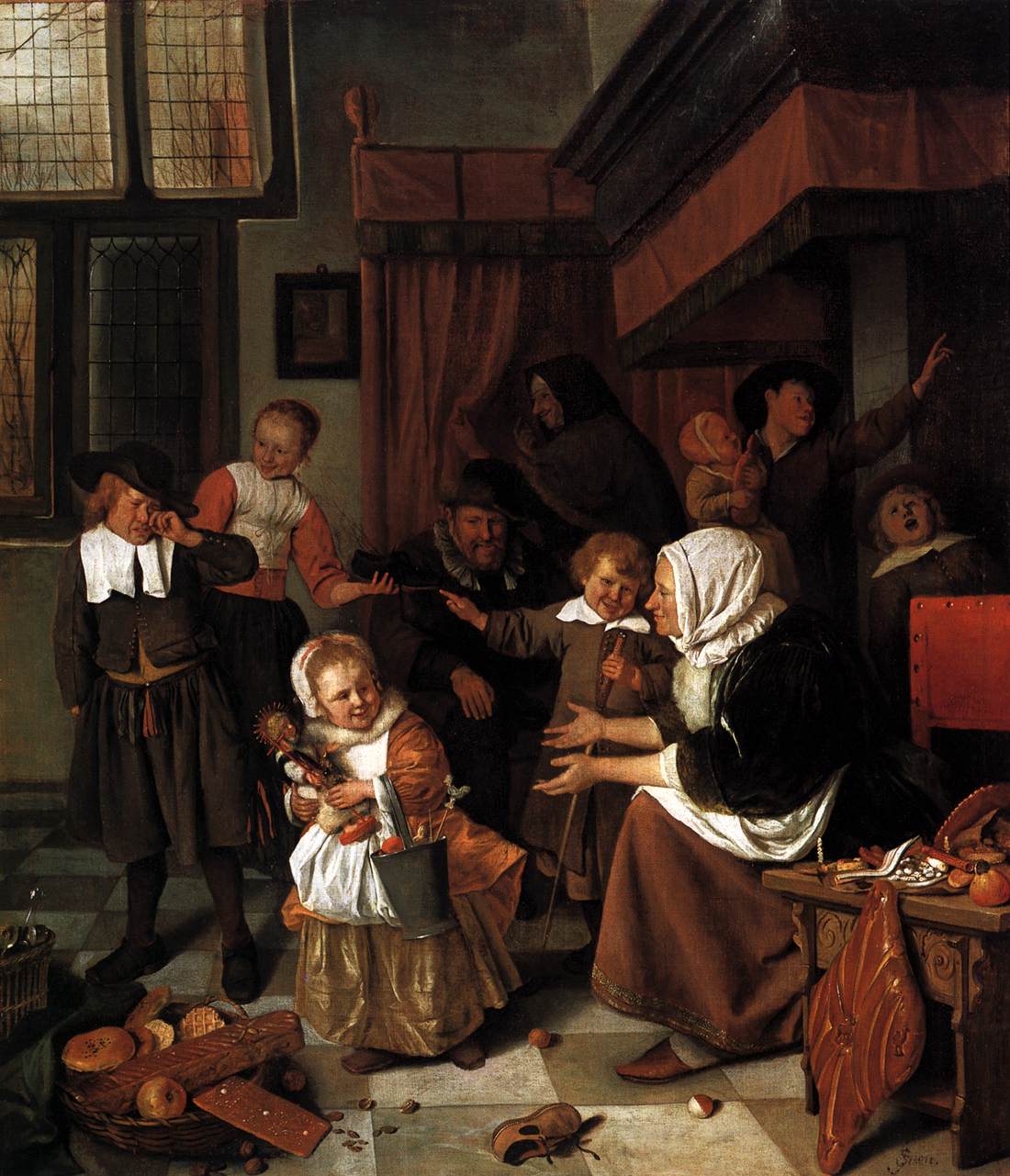
Another tradition of the evening kept each year was “the carrying round the great room of the bronze rooster that at one time surmounted the first City Hall built in New York by the Dutch in the seventeenth century”. The weathervane was presented to the Society by Washington Irving, its first Secretary, back in 1835. Some years the weathervane was oriented in turn to each speaker giving the response to the toasts accordingly.
Again, in 1907, one Dr Vandyke toasted the health of St Nicholas who “gladdens youth and makes the old seem young”. The Times relates:
“He explained that the long clay pipes which had been handed round to each guest was an old Dutch custom on St. Nicholas night. If a man got home with the pipe intact he was considered sober. Sad to relate, he said, it was the habit of those persons who had broken their own pipes to stand outside the tavern doors and break those of their more sober-minded brethren.”
While the St Nicholas Society has ancestral requirements for its membership, there are no such restrictions for the hospitable group’s guests. By the seventy-fifth anniversary of the Society in 1910, even we Irish we invited:
“William D. Murphy, who was called upon to give the toast of “Our City” said that he, an Irishman, was there at the feast for three reasons — first, because the Dutch founded the city; second, that the English took it away from them, and lastly, the Irish had it now.”
By 1919, New Yorkers were living in a changed world, with the war only just passed, and the dreaded Prohibition ever present. In that year, the Times reports that the speakers “expressed their opinions of Bolshevism, communism, and prohibition at their eighty-fourth annual dinner at Delmonico’s last night.”
Happily, these sons of Holland and devotees of Saint Nicholas kept his holy day festive despite the restrictions in place:
“Supreme Court Justice Victor J. Dowling, who was one of the speakers, expressed his thanks to the society for the Constitutional violations that had been provided for him.”
Lest you fear that the days (or nights) of celebrating this holy saint have faded into the folds of yesteryear, the Saint Nicholas Society of the City of New York is still in excellent health, and does not fail to keep the feast in accordance with the ways of its forefathers.
Indeed, the Society’s newsletter reported in 2018 that,
“Chief Steward Maximilian G. M. deCuyper Cadmus led the traditional procession of the Weathercock, which was raised high all around the room as members and guests energetically waved their napkins to generate a breeze that would waft him onto his perch near the lectern, facing east so as to crow out a warning in case of the approach of invaders from New England.”
This year the Society celebrated at the Union Club, and presented its Medal of Merit to the Harvard professor Henry Louis Gates, Jnr.
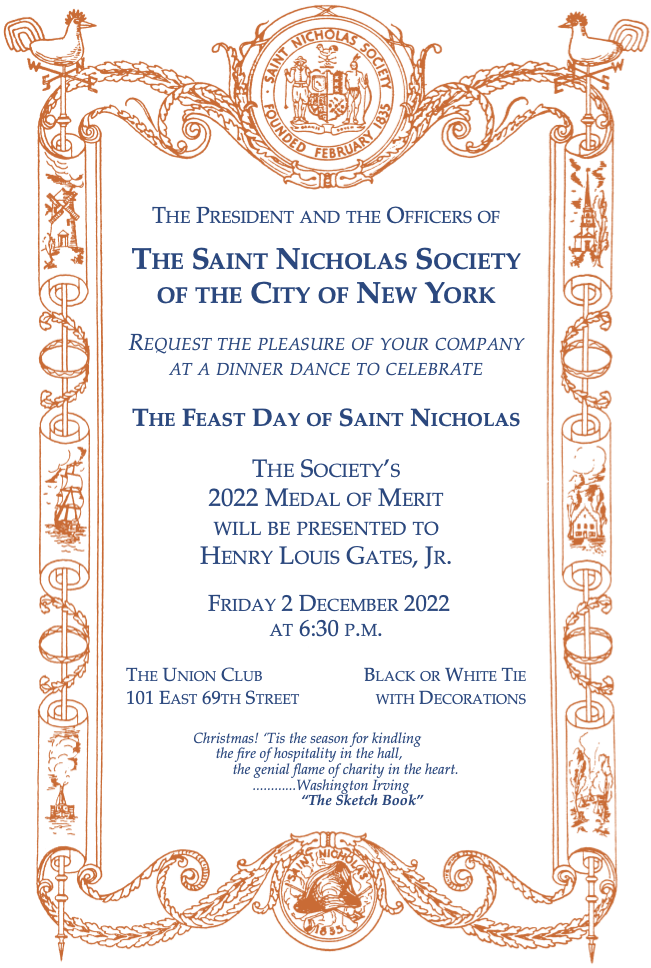
St Margaret Relic Heads to St Andrews
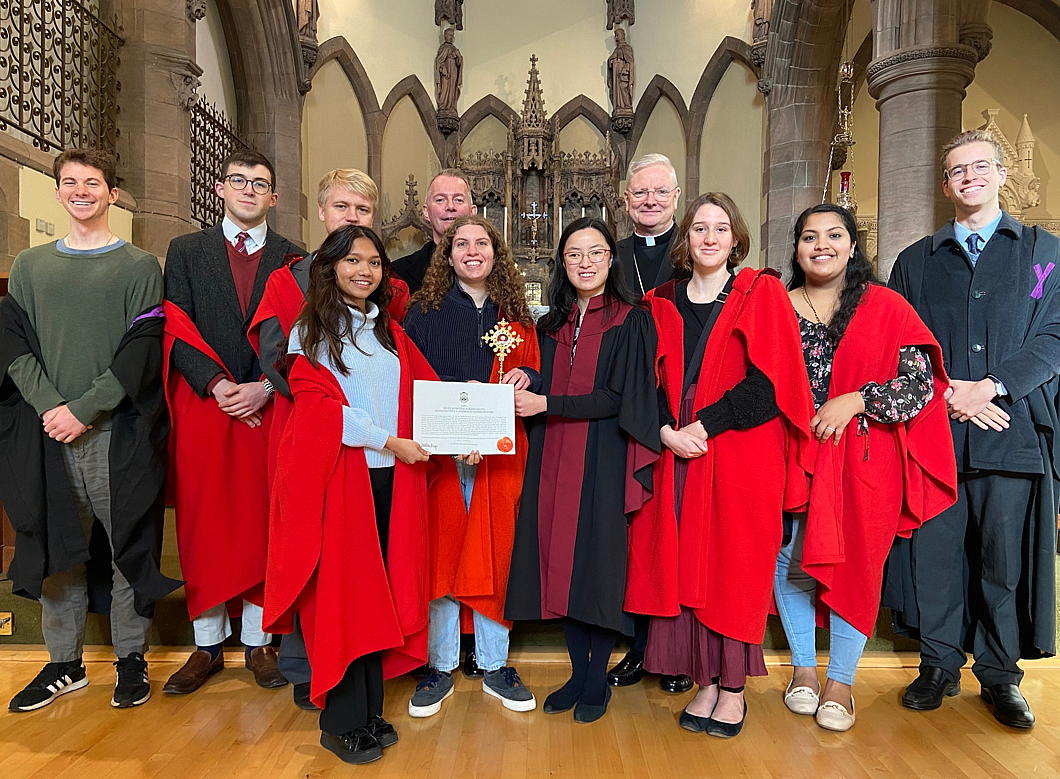
Students from St Andrews University have accompanied their Catholic chaplain to receive a relic of St Margaret of Scotland from the Archbishop of St Andrews & Edinburgh, Dr Leo Cushley.
The relic was put in the care of Canmore, the Catholic chaplaincy at St Andrews, whose chapel is dedicated to the Hungary-born English princess who became Scotland’s saintly queen.
When the relic in St Margaret’s Church in Dunfermline — the country’s royal centre in the twelfth and thirteenth centuries — were being removed from their reliquary the piece of bone fragmented.
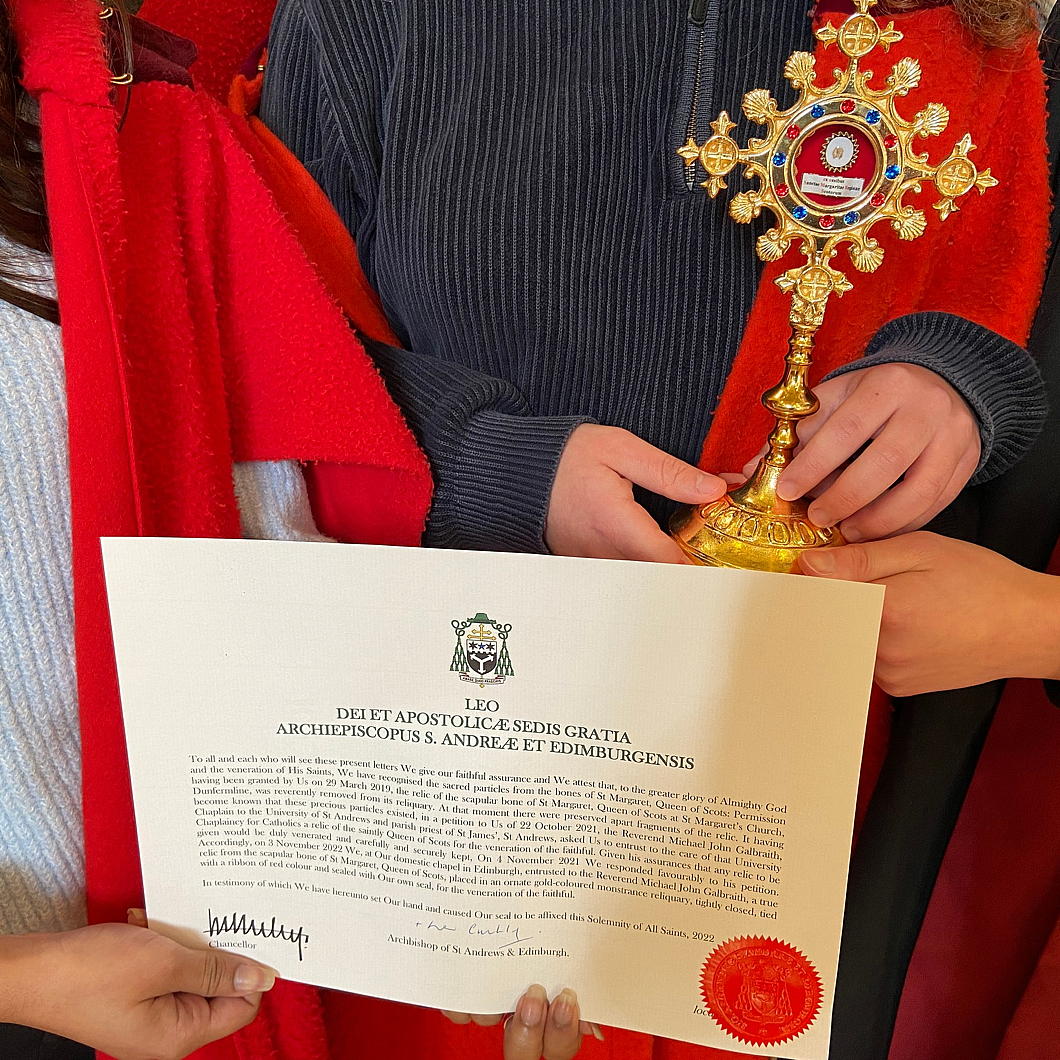
The Archdiocese decided to make this an opportunity for the relics of the royal saint to be distributed further.
This relic of St Margaret will remain in Canmore where it will be available for veneration by students and other visitors.
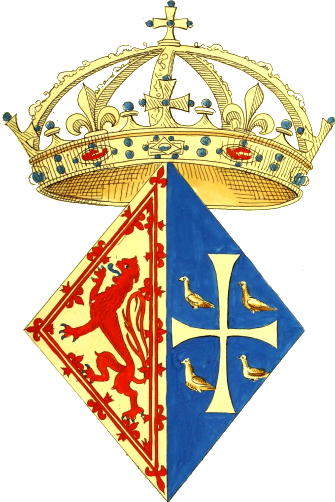
SAINT MARGARET
QUEEN OF SCOTLAND
pray for us
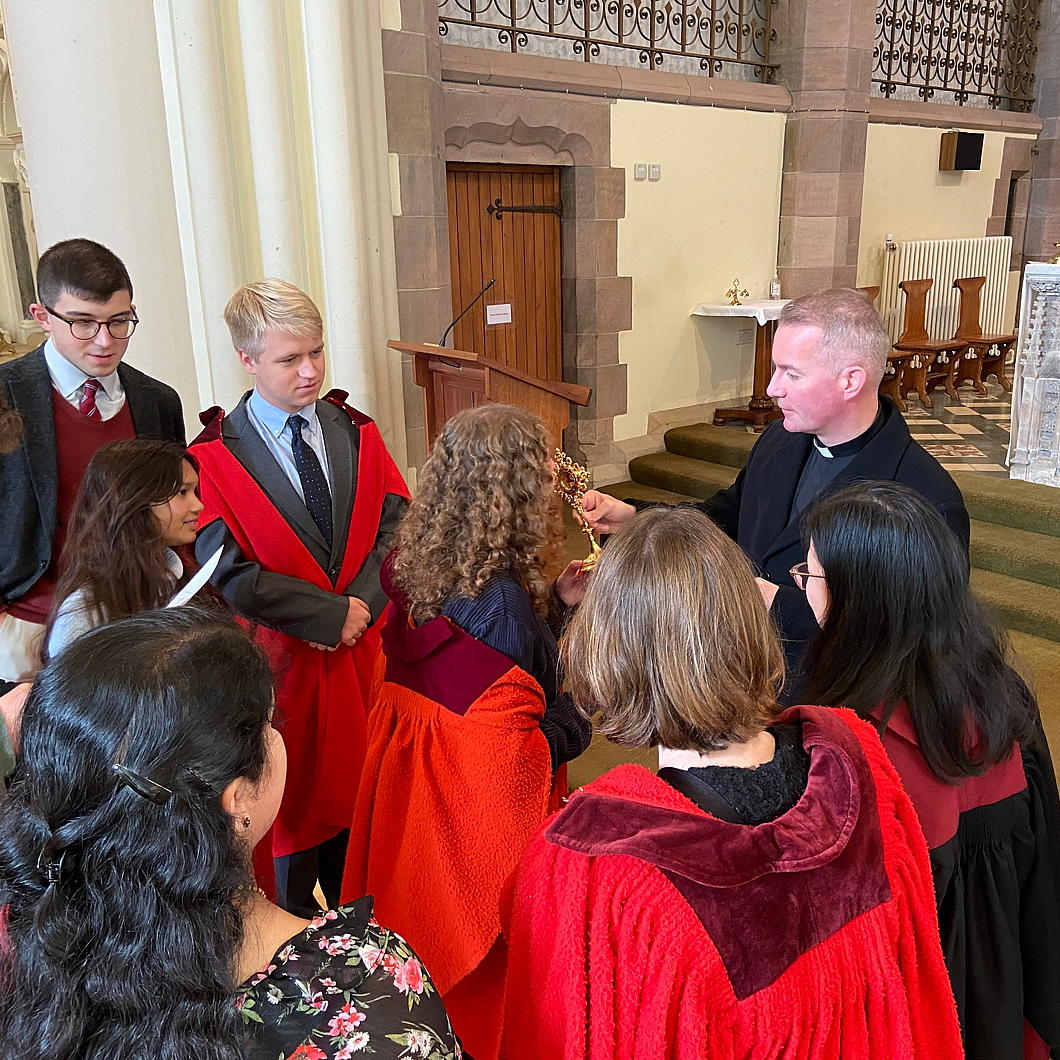
Thomas More’s London
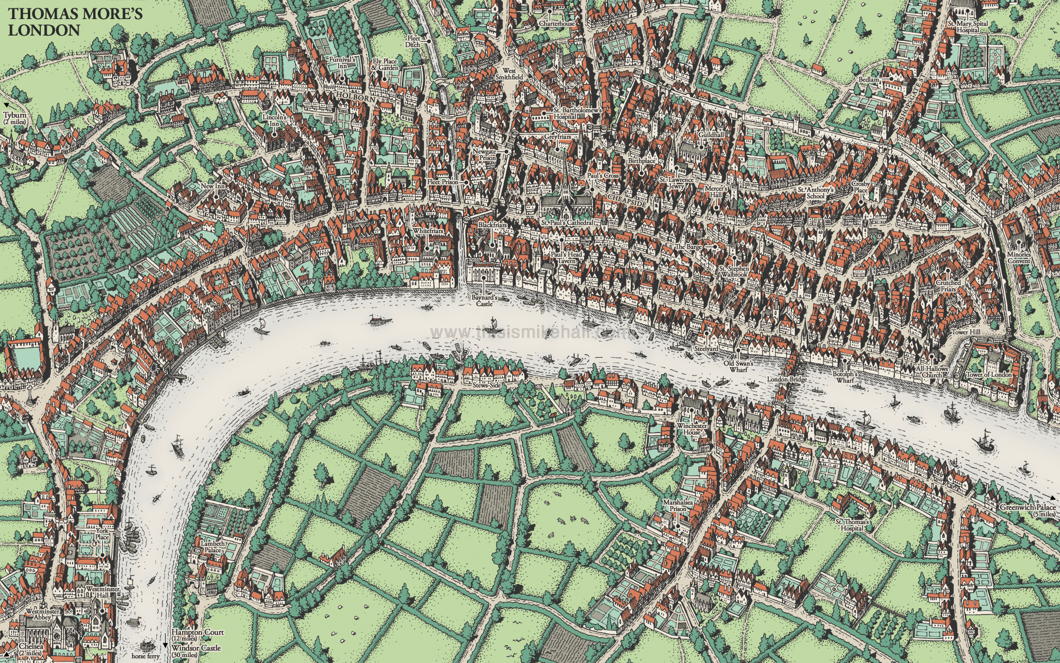
There are almost as many Londons as there are Londoners. There’s Shakespeare’s London, Pepys’s London, Johnson’s London — even fictional characters like Sherlock Holmes have their own London.
The city of Saint Thomas More takes form in a representation made by the excellent map designer Mike Hall, Harlow-born but now based in Valencia.
This map was commissioned from Hall by the Centre for Thomas More Studies in Texas and the designer based the view and the colour scheme on Georg Braun and Frans Hogenberg’s map of London from their 1617 Civitates Orbis Terrarum
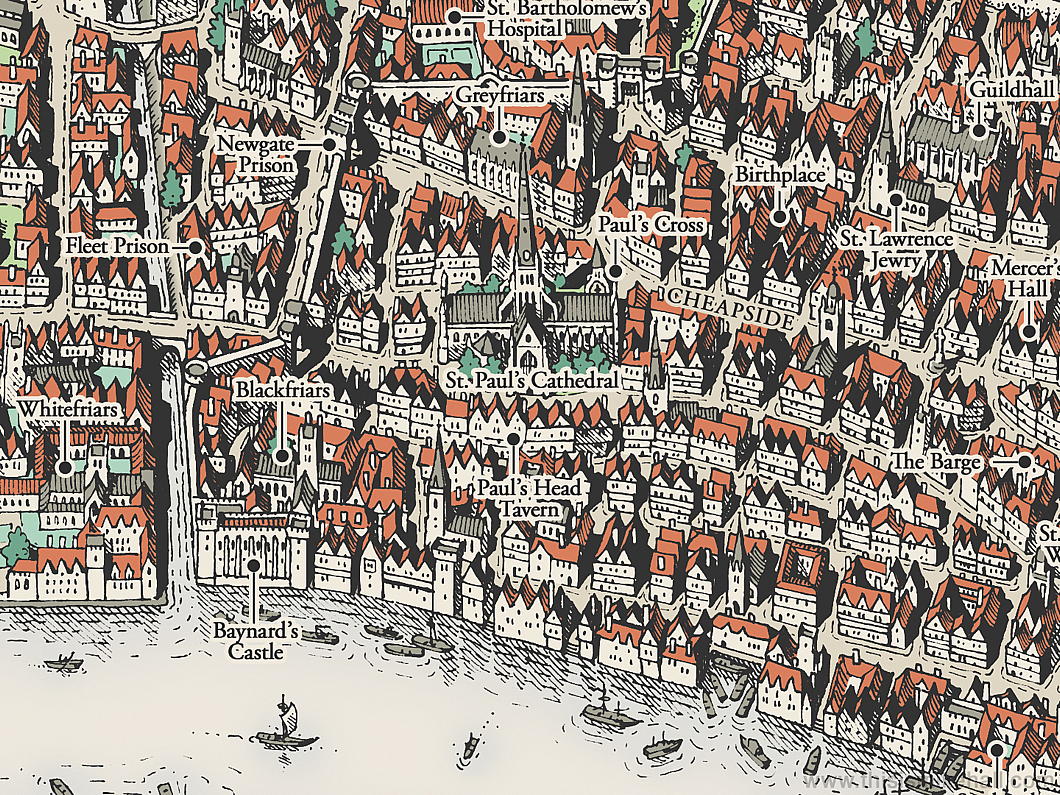
From his birthplace in Milk Street to the site of his execution, all the sites from the great points of More’s life are here in this map.
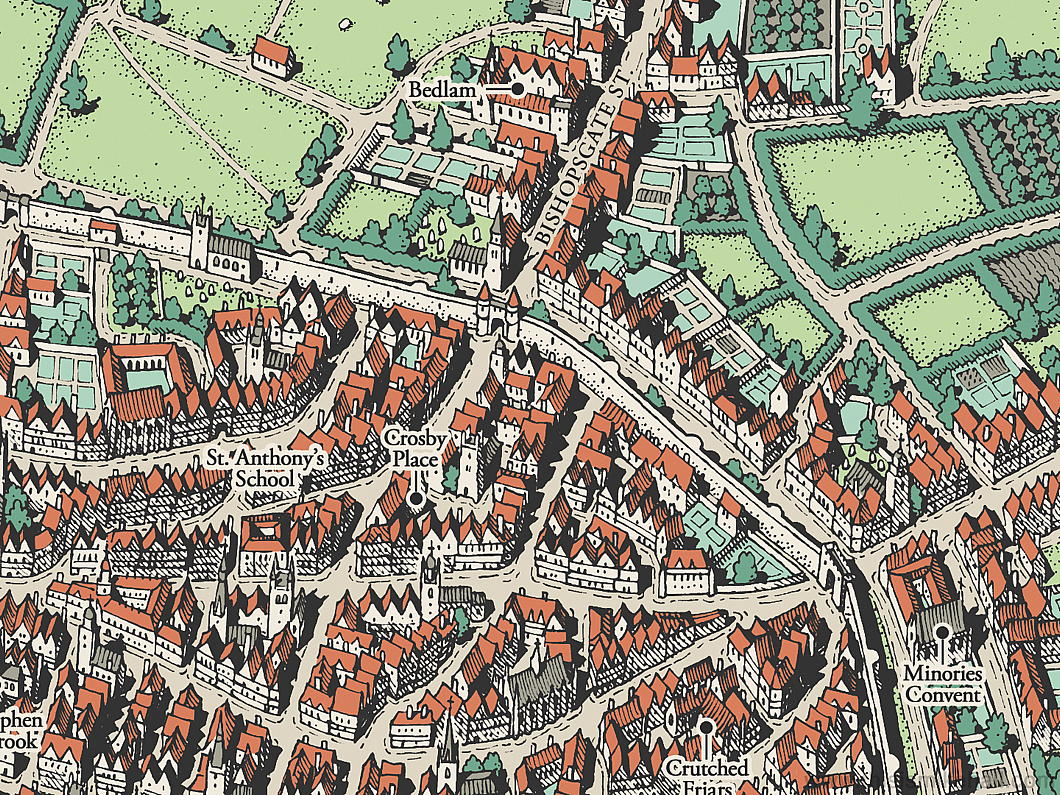
The future Lord Chancellor was educated at the school founded by the Hospital Brothers of Saint Anthony, one of the best in the City of London, and when he finished at Oxford returned to London to study law at New Hall and Lincoln’s Inn.
Crosby Place, the house that he bought in 1523 is not far from St Anthony’s School though its surviving remnant was moved brick by brick to Cheyne Walk in 1910 — a site close to More’s Chelsea residence of Beaufort House.
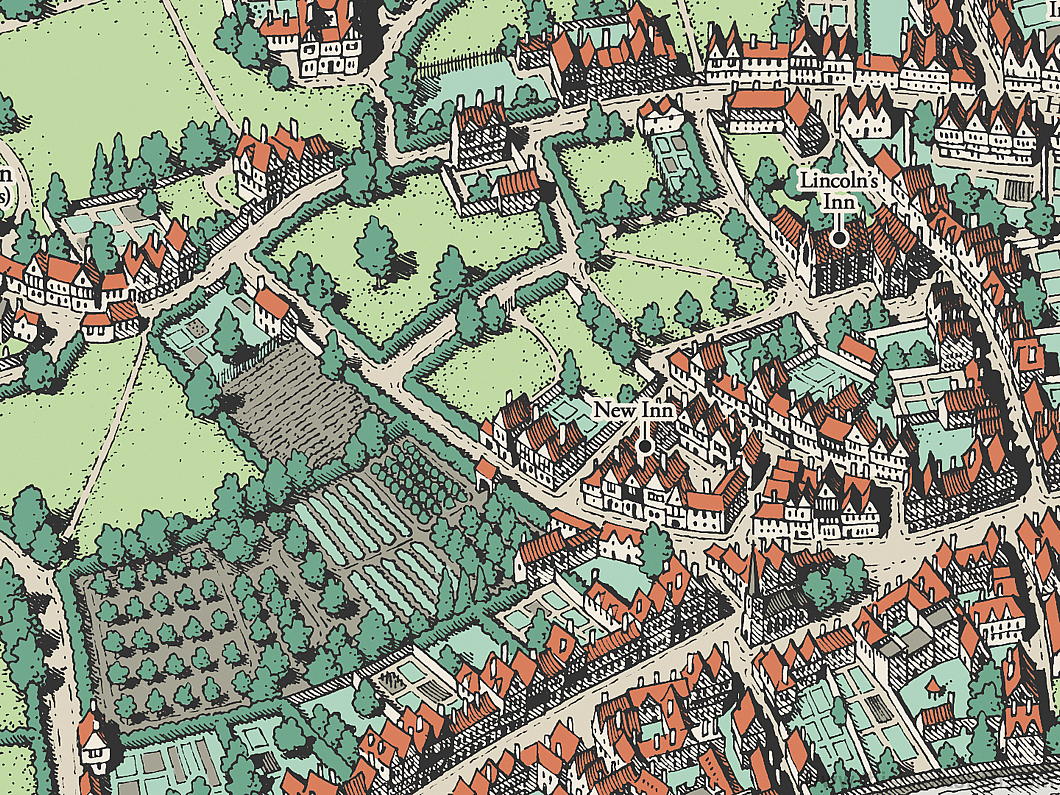
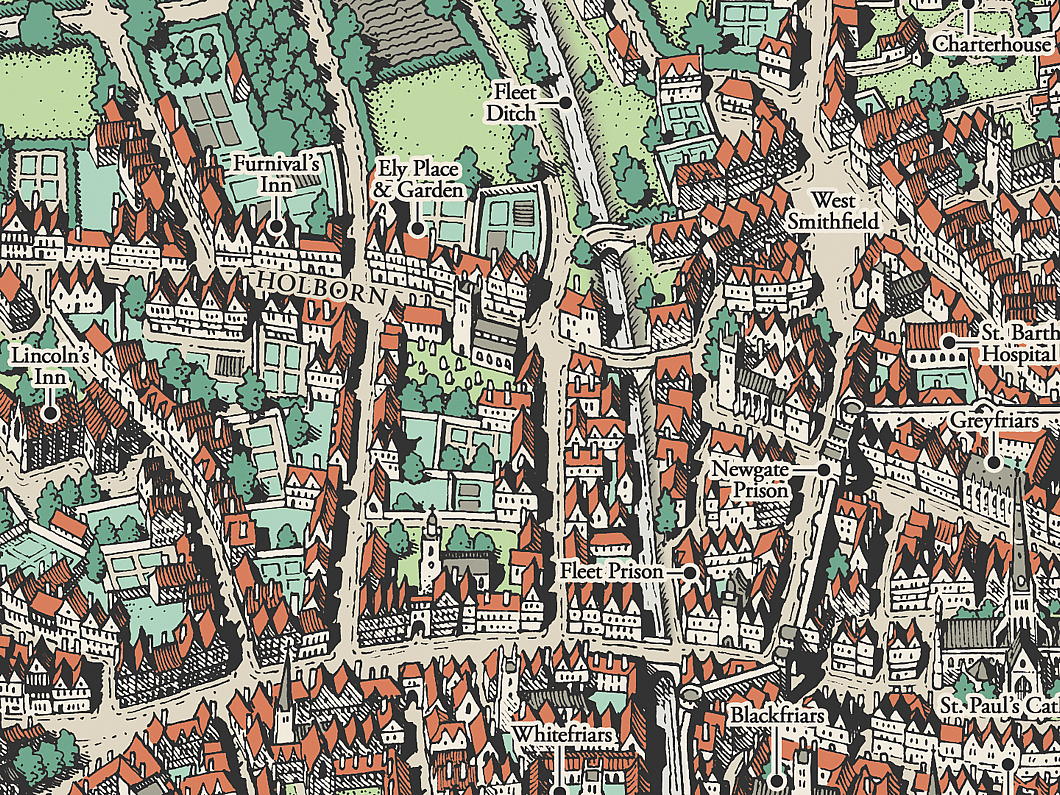
The chapel of Ely Place — town palace of the Bishop of Ely — still survives as St Etheldreda’s, the only mediæval church in London now in use as a Catholic parish.

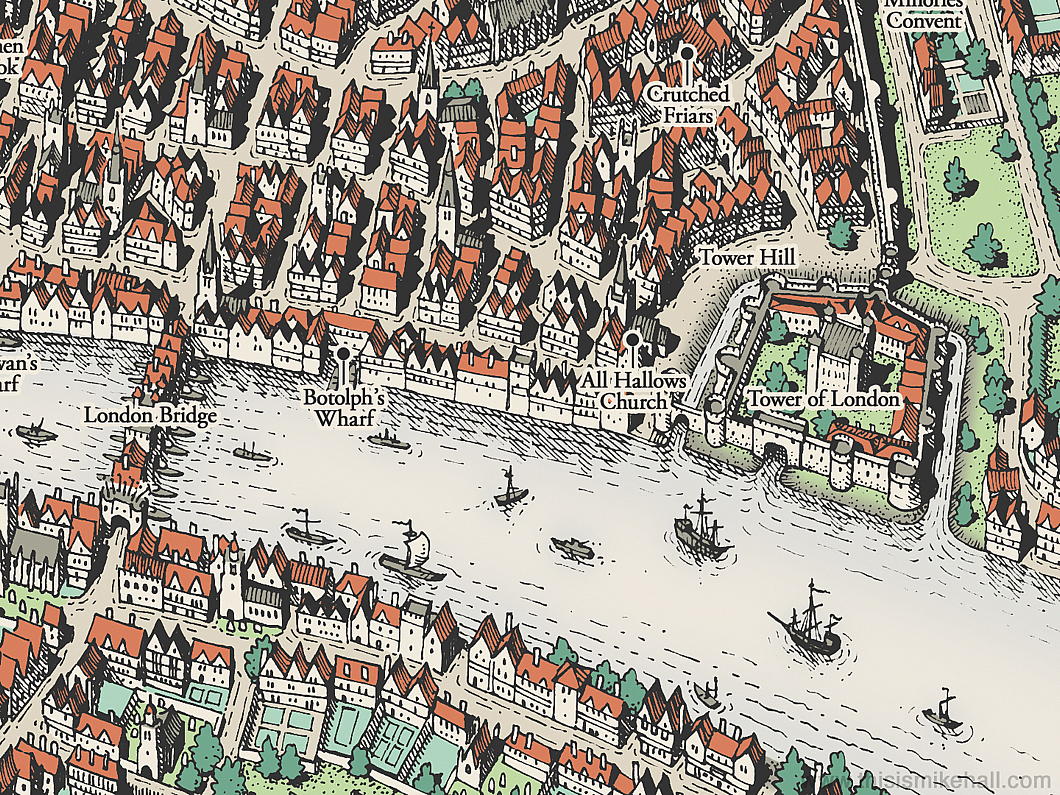
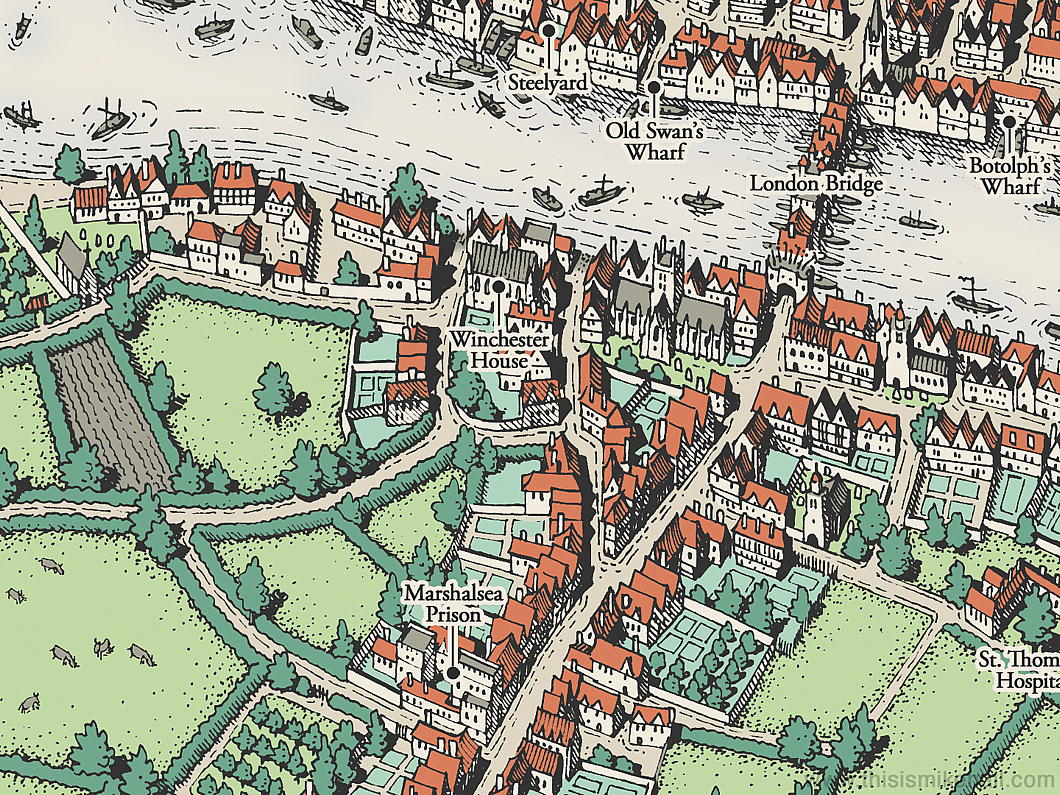
God’s own Borough of Southwark gets a look in as well, with the Augustinian priory of St Mary Overs (now the Protestant cathedral of Southwark) and the town palace of the bishops of Winchester. Remnants of the great hall of Winchester Palace remains standing to this day.
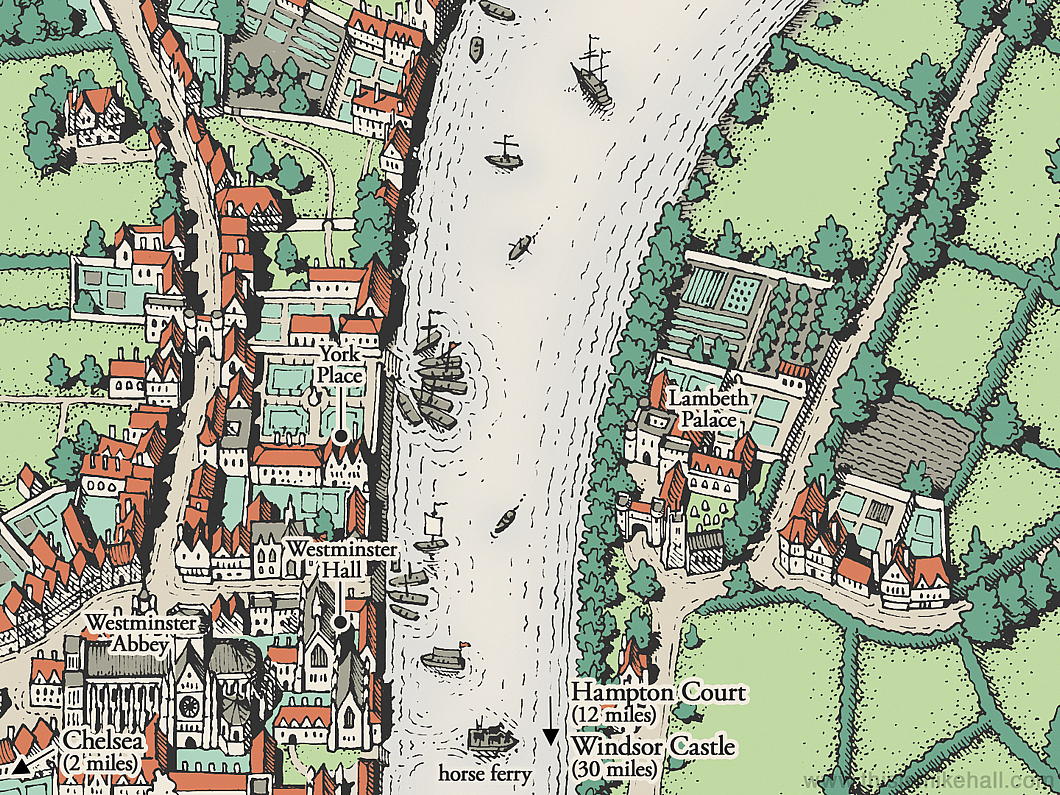
As is the mapmaker’s privilege, Mr Hall has taken some liberties: in order to fit Lambeth Palace — the residence of the Archbishop of Canterbury (and Primate of All England) he’s shifted it a bit north of its actual spot.
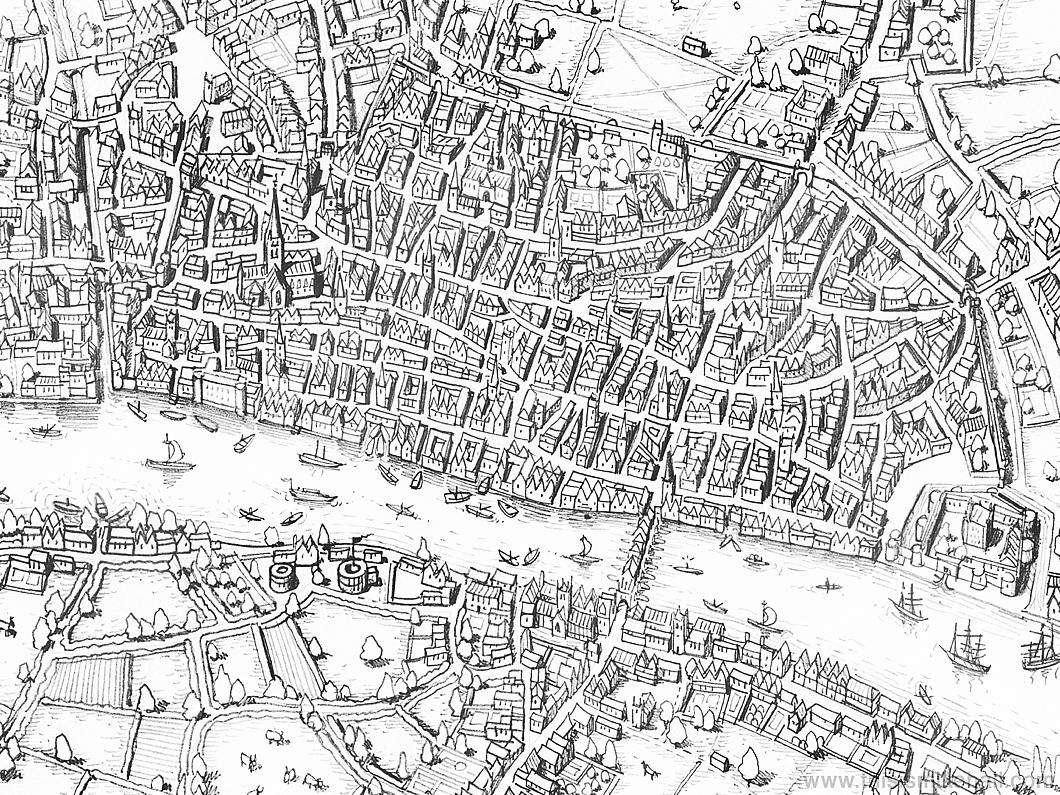
I wish he’d kept the Rose and Globe theatres which he included in his initial sketch for the map — Southwark was the theatre district of its day.
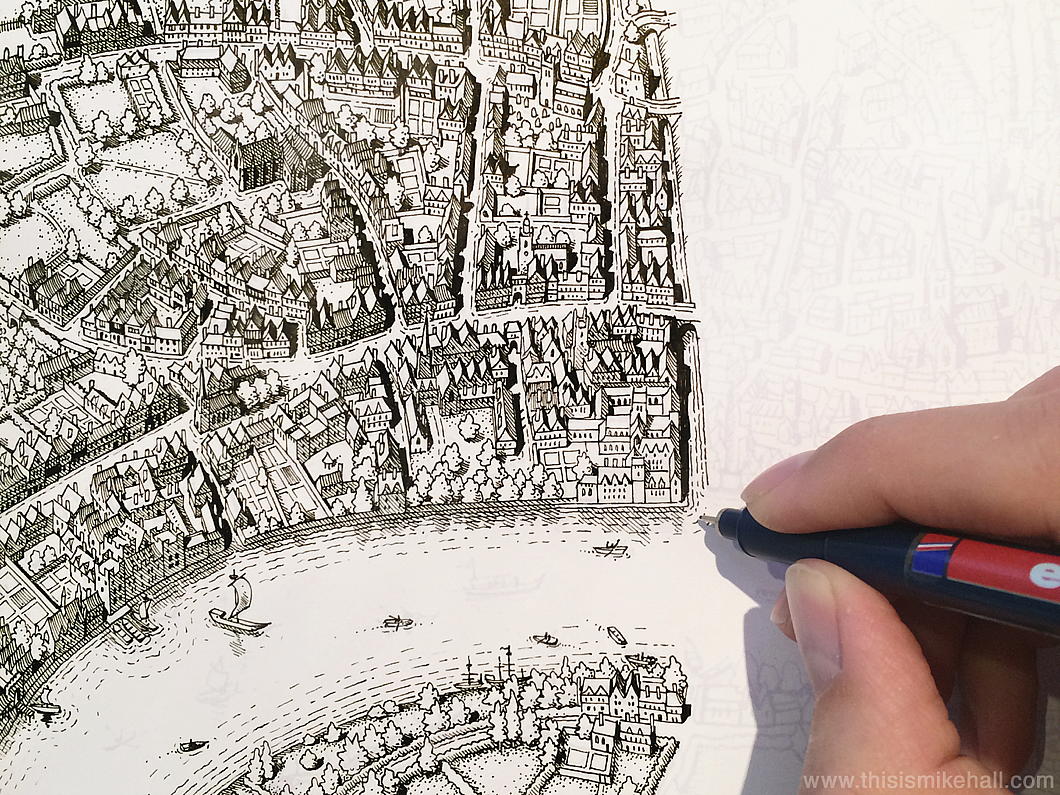
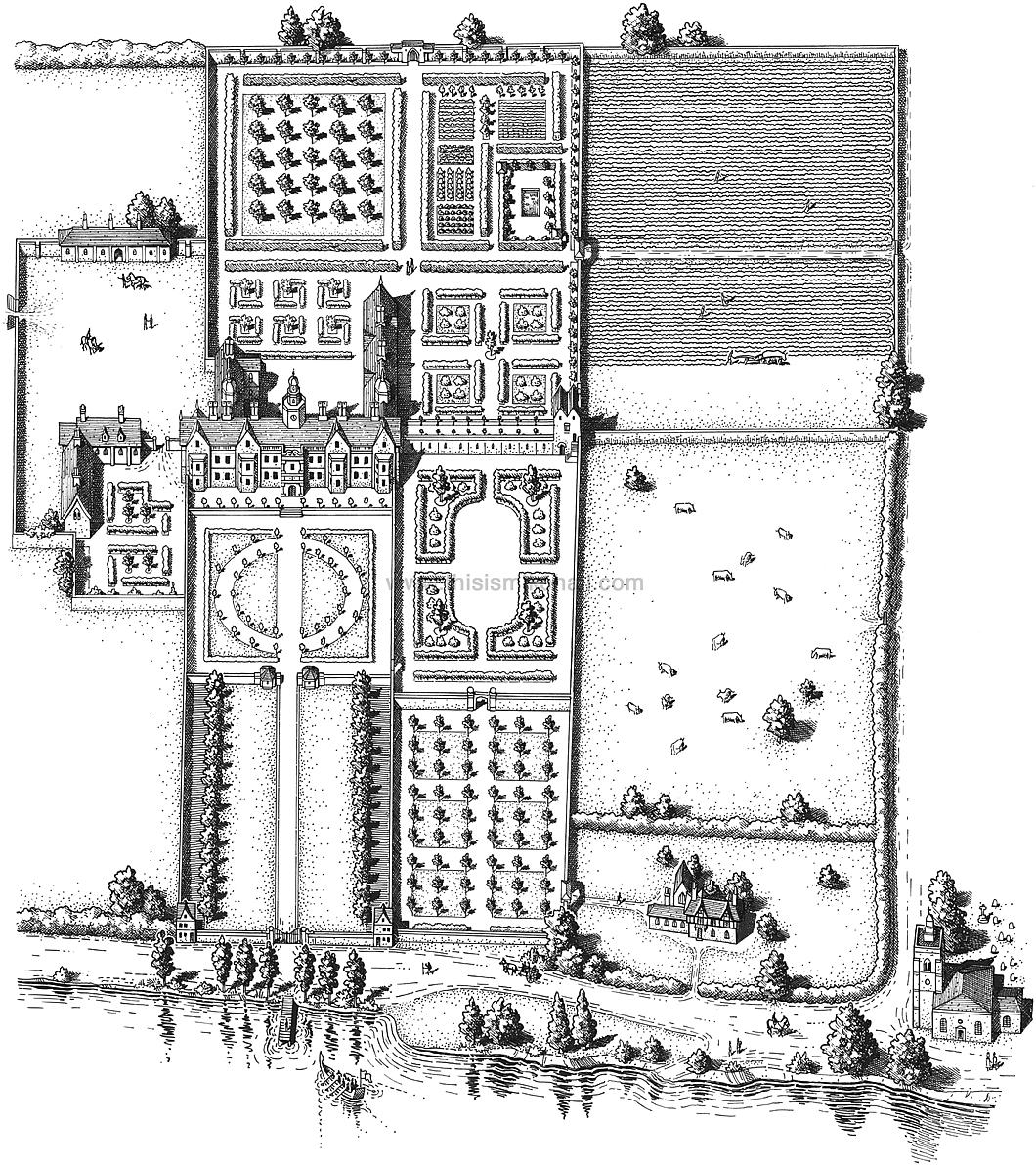
Hall also completed a sketch of Beaufort House as it would have appeared during St Thomas More’s lifetime. The house was demolished in 1740, and today’s Beaufort Street runs the line of the main drive leading up to it.
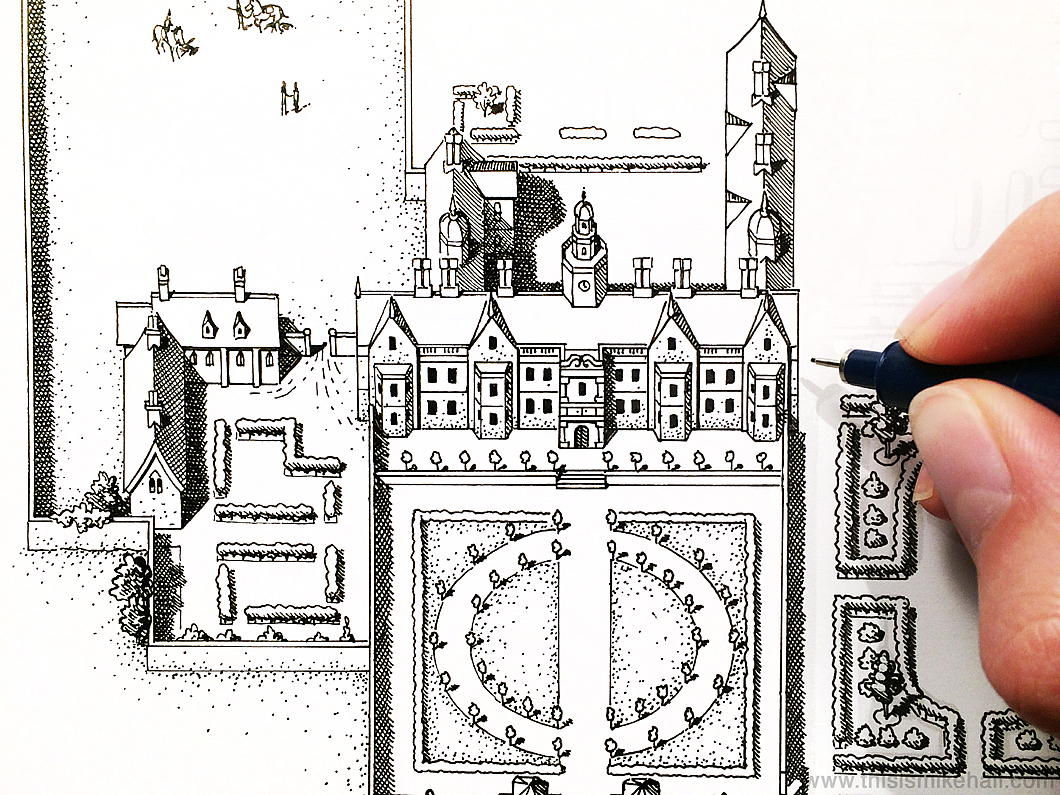
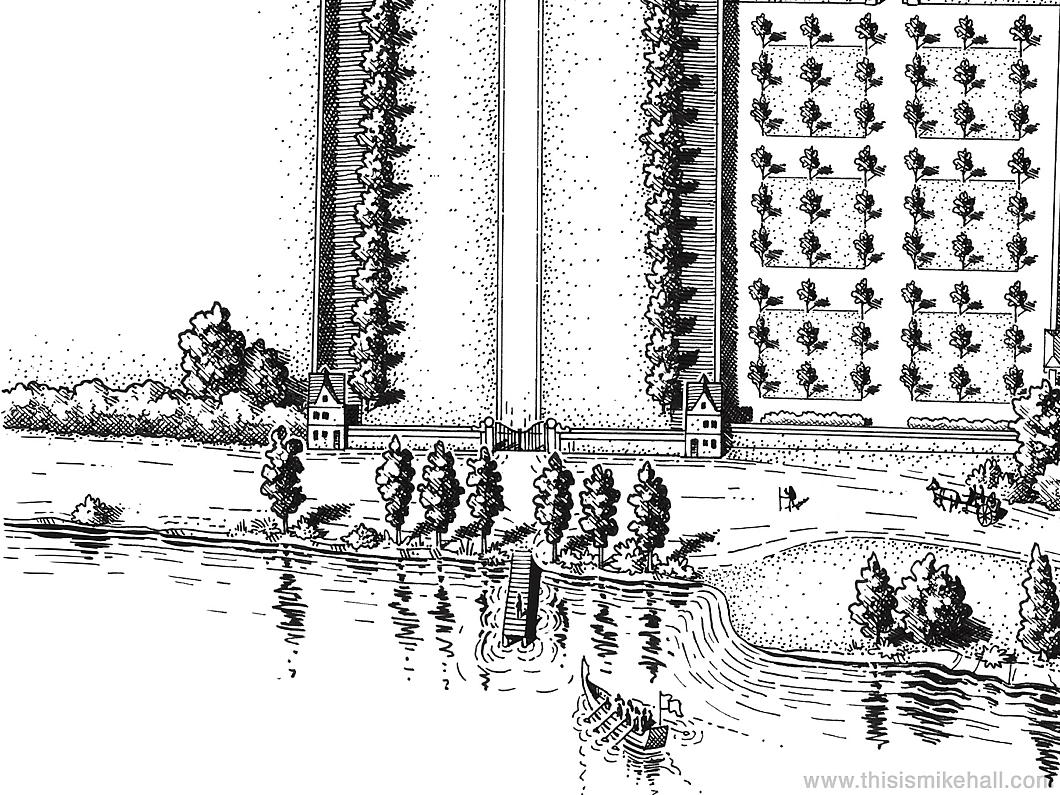
The Church of All Saints at Chelsea (now known as Chelsea Old Church) is at the bottom of the sketch and is where the More family burial vault is. His severed head is believed to be entombed there to this day.
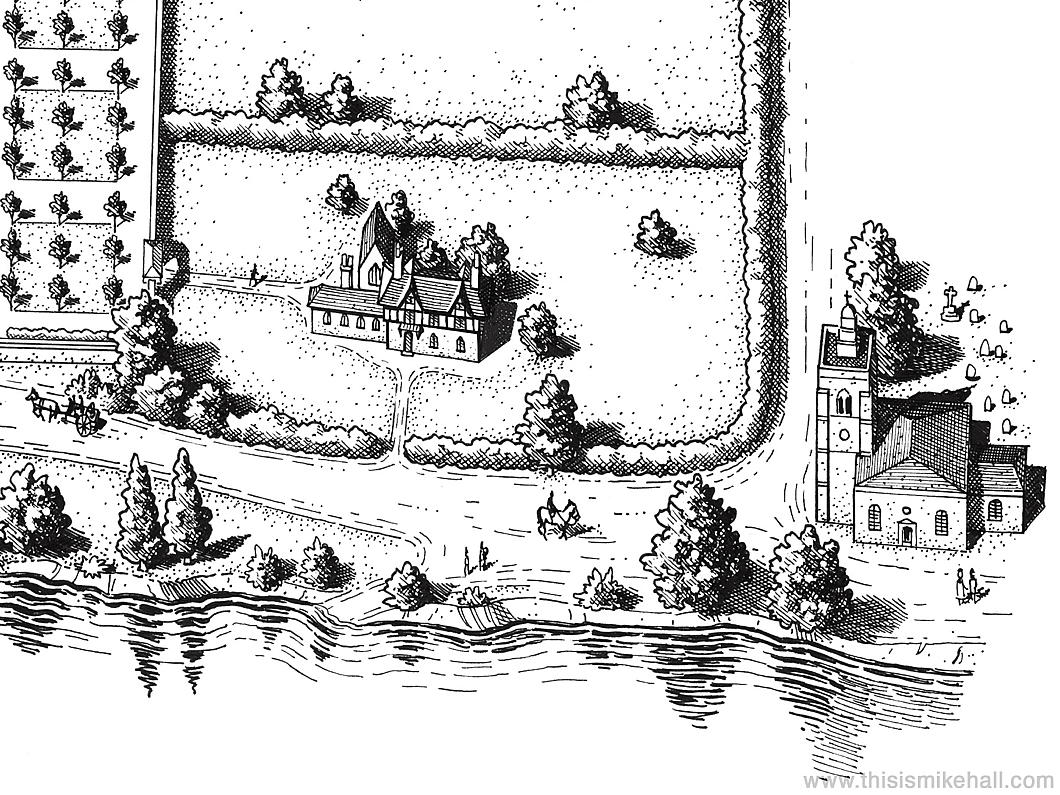
The Nicolaasjaar
Catholic Amsterdam Proclaims a Year of Saint Nicholas
A TINY RELIC of Saint Nicholas the Wonderworker has provided an excuse for Amsterdam Catholics to organise a whole year of festivities dedicated to the holy man and his legacy. The Basilica of St Nicholas stands just across from Centraal Station, gateway to the Dutch capital for so many visitors, and the parish has received as a gift the relic from the Benedictine abbey of St Adalbert’s in Egmond.
The tiny sliver of St Nicholas’s rib was enshrined in the Basilica at a special Mass opening the Nicolaasjaar on the eve of the saint’s feast in December. Bishop Jan van Burgsteden presided and prayers were also offered for HKH Princess Catharina-Amalia whose eighteenth birthday fell days later on 7 December.
The opening of the year met with wide coverage in the media, with even the website of the city proclaiming “There will always be a bit of Sinterklaas in Amsterdam from now on”.
“Saint Nicholas is really coming to Amsterdam now,” deacon Rob Polet told the evening news on Dutch television, “and here he will stay”.
“From the Friesch Dagblad to the Nederlands Dagblad, from Trouw to De Telegraaf: hardly any newspaper wanted to miss it,” the parish reports. “De Stentor, the Eindhovens Dagblad, the Zeeuwse PZC, and many other titles spread the news of St Nicholas. NRC Handelsblad and Het Parool even used it twice.”
Helena at Bethlehem
He sent along this passage from Waugh’s novel Helena in which the saint (and mother of the Emperor Constantine) arrives at Bethlehem, the city of Our Saviour’s birth, on the very feast of the Epiphany. She addresses the Magi in prayer.
“Like me,” she said to them, “you were late in coming. The shepherds were here long before; even the cattle. They had joined the chorus of angels before you were on your way. For you the primordial discipline of the heavens was relaxed and a new defiant light blazed among the disconcerted stars.
“How laboriously you came, taking sights and calculations, where the shepherds had run barefoot! How odd you looked on the road, attended by what outlandish liveries, laden with such preposterous gifts!
“You came at length to the final stage of your pilgrimage and the great star stood still above you. What did you do? You stopped to call on King Herod. Deadly exchange of compliments in which there began that unended war of mobs and magistrates against the innocent!
“Yet you came, and were not turned away. You too found room at the manger. Your gifts were not needed, but they were accepted and put carefully by, for they were brought with love. In that new order of charity that had just come to life there was room for you too. You were not lower in the eyes of the holy family than the ox or the ass.
“You are my especial patrons,” said Helena, “and patrons of all late-comers, of all who have had a tedious journey to make to the truth, of all who are confused with knowledge and speculation, of all who through politeness make themselves partners in guilt, of all who stand in danger by reason of their talents.
“Dear cousins, pray for me,” said Helena, “and for [the generally believed still unbaptized Emperor Constantine] my poor overloaded son. May he, too, before the end find kneeling-space in the straw. Pray for the great, lest they perish utterly. And pray for… the souls of my wild, blind ancestors…
“For His sake who did not reject your curious gifts, pray always for the learned, the oblique, the delicate. Let them not be quite forgotten at the Throne of God when the simple come into their kingdom.”
The Saints are Glad
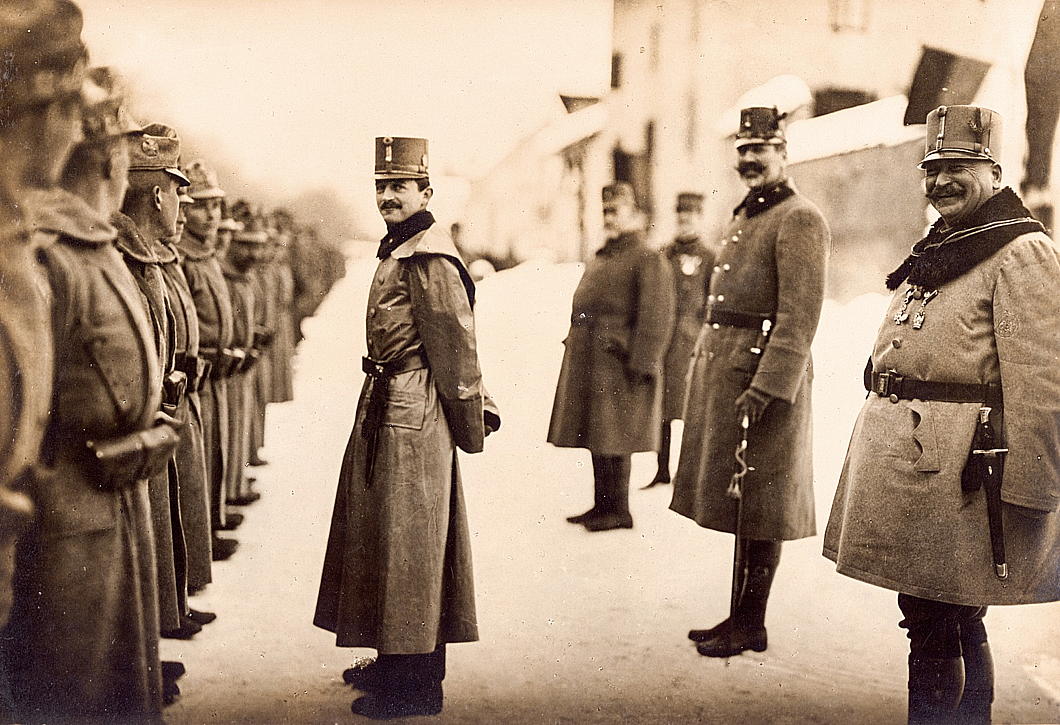
I love this photo of Blessed Charles — here still the heir to the throne — inspecting Austro-Hungarian troops in the Südtirol in 1916.
On the far right of the photograph, Gen. Franz (Ferenc) Rohr von Denta, commander of the Royal Hungarian Army, beams with a massive grin. He looks like a bit of a character.
Next to him is Archduke Eugen, the last Hapsburg to serve as Hoch- und Deutschmeister of the Teutonic Order, which in 1929 was transformed into a priestly religious order.
Franz Joseph would die just months after this photograph was taken.
His grand-nephew and successor Charles would be the last Emperor of Austria, Apostolic King of Hungary, and King of Bohemia — amongst the myriad other titles — to reign (so far).
Benedict of Palermo
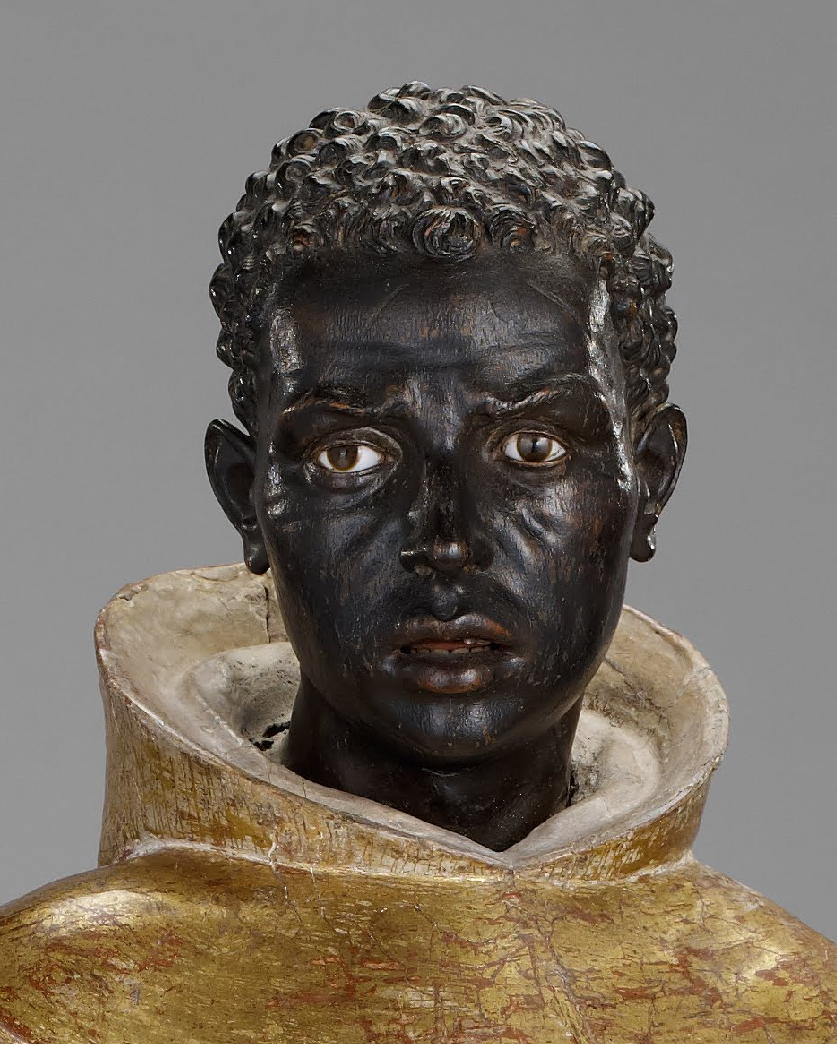
The island of Sicily is a cross-section of the numerous kingdoms and empires which have ruled and inhabited it from the Phoenecians down to the present day. During the Norman conquest of the island — those Normans did get around — many Lombards came to help secure the Normans’ rule over the existing Sicilians who were mostly Greek and Arab. The Gallo-Italic dialect of those Lombards is still spoken in a few towns and villages speckled across the island and the settlements they founded are known as the Oppida Lombardorum.
In one such Lombard town, San Fratello, in the 1520s a son was born to an enslaved couple named Cristoforo and Diana whose piety was so highly regarded that their master granted this first-born son, Benedetto (Benedict), his freedom from birth.
From his earliest days Benedict was prone to solitude to the extent that he was mocked by his peers, in addition to being insulted frequently for his black skin. As a teenager he left the family home and became a shepherd but gave whatever he could to help the poor and those even less fortunate than him.
Discerning the call to solitude, Benedict entered the hermitage of Santa Domenica in Caronia but his reputation for holiness was such that the pious people of the island began to visit him and implore him for his prayers and miracles.
Accompanied by another member of the community, Benedict fled to other places around the island, offering great and severe penances in reparation for the sins of humanity, but no matter where he went within days the faithful had found out and pestered him.
When the founder of the hermetic community at Santa Domenica died, the brothers elected Benedict his successor, despite his lack of education and illiteracy. Benedict returned to lead the community until it was abolished in 1562 by the reforms of Pope Pius IV who urged independent groups of Francis-inspired hermits to regularise themselves into existing Franciscan orders.
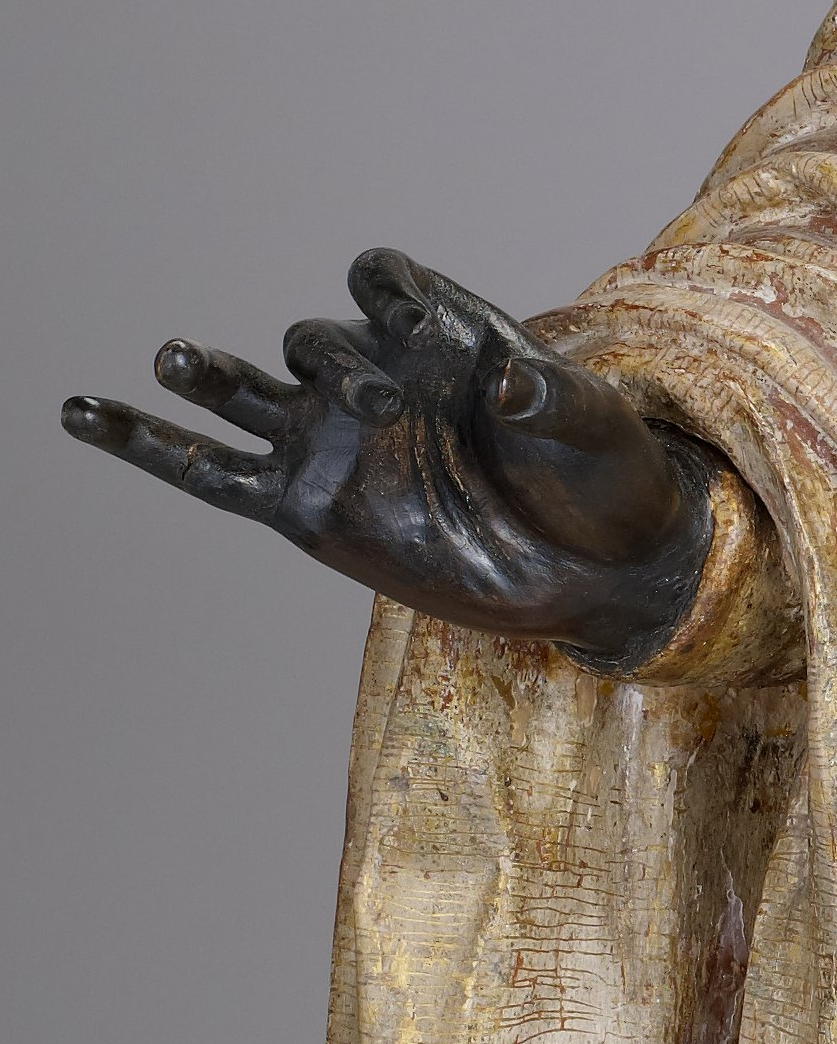
Benedict went first to a Franciscan friary in Giuliana before settling into that of Santa Maria di Gesù in Palermo, the primary city of Sicily. Having been a superior of his old community, Benedict arrived at the Palermo community as a simple cook but even here his piety and talents were recognised. He was first put in charge of the novices and then, in 1578, his confrères elected him their custos or superior though he was only a brother rather than a priest.
He was known as a miracleworker across the island, but it was not only the poor, the sick, and the destitute who flocked to Benedict to seek his help. Theologians and men of learning came to visit this humble and uneducated friar. Even the viceroy of the island was known to take his counsel on important affairs of state.
In his later years, Benedict returned to being the cook of the friary until his death in April 1589. By that time the whole island of Sicily — Greeks, Arabs, Latins, all — revered this poor, humble, and unlettered friar.
Sicily’s ruler, King Philip III of Spain, ordered a magnificent tomb to be built to house Benedict’s remains in the friary of Santa Maria di Gesù, and in death his cult spread far beyond the island.
St Benedict of Palermo — or Benedict the Moor — was beatified by Benedict XIV in 1743 and canonised by Pius VII in 1807. Over the centuries, many non-white Christians came to implore his intercession and he became particularly popular among natives and mixed-race peoples in South America, in Africa itself, and amongst African-Americans in the United States.
This statue is believed to be the work of the Sevillian sculptor José Montes de Oca and was carved in the 1730s. Long in a private collection in Milan, since 2010 it has formed part of the collection of the Minneapolis Institute of Art.
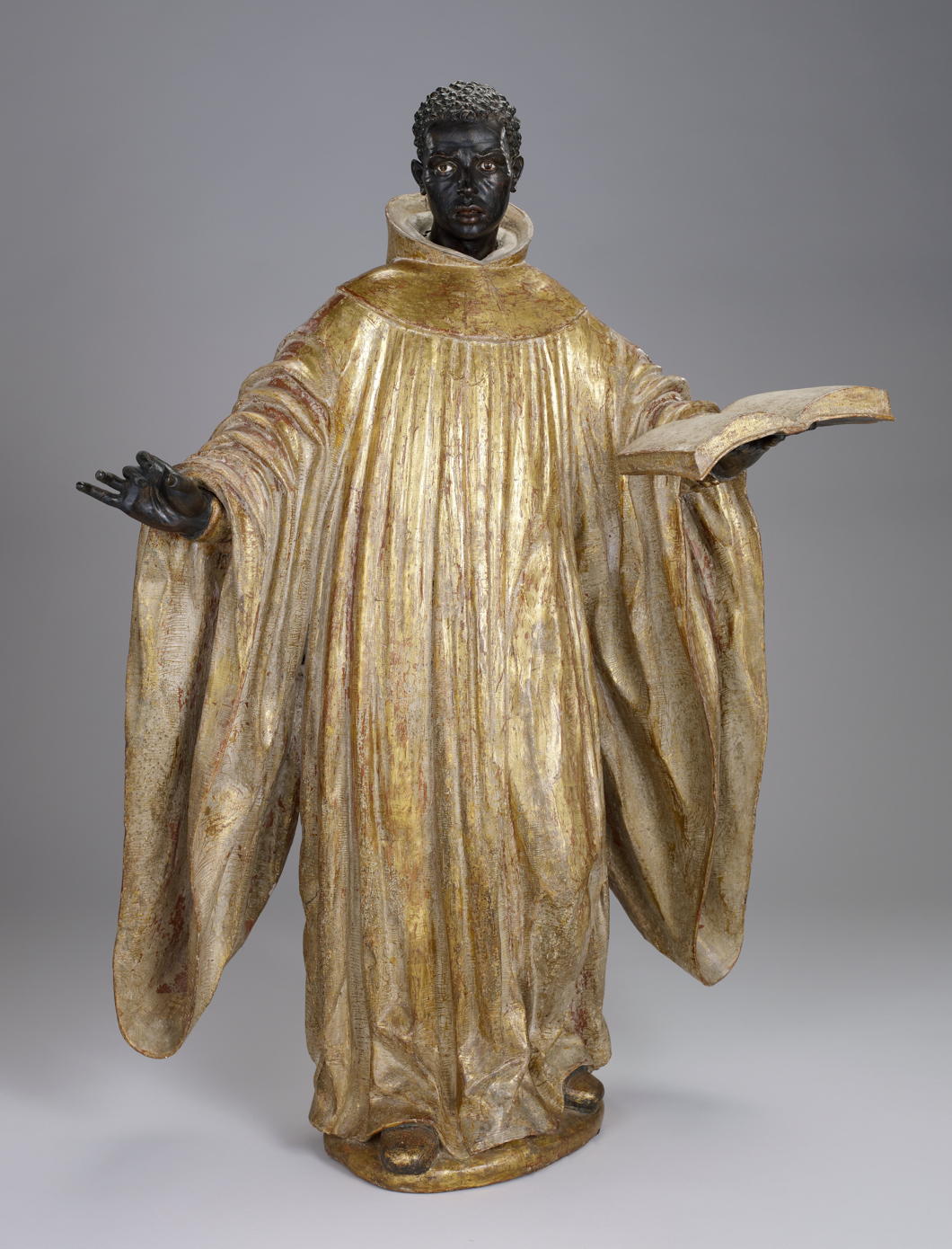
St Nicholas, Our Patron
As by now you are all well aware, today is the feast of Saint Nicholas, the patron-saint of New York. His patronship (patroonship?) over the Big Apple and the Empire State date to our Dutch forefathers of old – real founding fathers like Minuit, van Rensselaer, and Stuyvesant, not those troublesome Bostonians and Virginians who started all that revolution business.
Despite being Protestants of the most wicked and foul variety, the New Amsterdammers and Hudson Valley Dutch maintained their pious devotion to the Wonder-working Bishop of Myra and kept his feast with great solemnity.
After New Netherland came into the hands of the British (and was re-named after our last Catholic king) the holiday continued to be celebrated by the Dutch part of the population, and was greatly popularised in the early nineteenth century by the publication of a curious volume entitled A History of New York from the Beginning of the World to the End of the Dutch Dynasty which purported to be by one Diedrich Knickerbocker.
In fact it was by Washington Irving, the first American writer to make a living off his pen, who did much to popularise St Nicholas Day in New York as well as to revive the celebration of Christmas across the young United States.
While, aside from hearing Mass and curling up with a clay pipe and a volume of Irving (being obsessive, I have two complete sets) here are a few links that shed some light on New York’s heavenly protector.
Historical Digression: Santa Claus was Made by Washington Irving
New-York Historical Society Quarterly: Knickerbocker Santa Claus
The History Reader: The 18th Century Politics of Santa Claus in America
The New York Times: How Christmas Became Merry
The Hyphen: Thomas Nast’s Illustrations of Santa Claus
– plus: Santa Claus and the Ladies
National Geographic: From Saint Nicholas to Santa Claus
Previously: Saint Nicholas (Index)
First Gypsy Woman Martyr is Beatified
Emilia Fernández Rodríguez was killed during Spanish Civil War
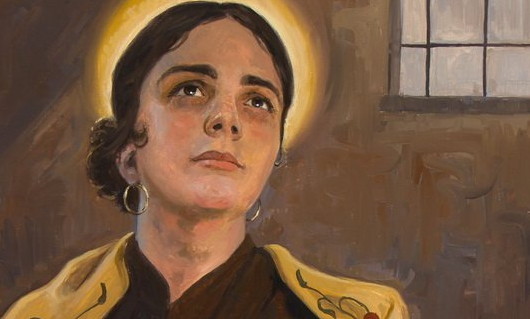
The Catholic Church has beatified its first gypsy martyr in a ceremony in the Spanish city of Almería on the southern Mediterranean coast. Emilia Fernández Rodríguez, also known as “La canastera” (the basket-weaver), was one of 115 martyrs murdered in odium fidei by anti-Catholic militants during the Spanish Civil War.
The beatification ceremony took place in the city’s conference centre attended by over 5,000 people, including twenty-one bishops and four cardinals.
In 1938, Blessed Emilia Fernández was a poor gypsy woman living with her husband in Tíjola and surviving by basket weaving when the Republican forces occupied the town, shutting its church, and conscripting its menfolk. Emilia’s husband Juan with her help feigned blindness to escape conscription but was discovered and the couple were imprisoned separately.
Arriving at the women’s prison in Gachas-Colorás, Blessed Emilia was already pregnant and was jailed alongside many other practicing Catholic women who had refused to abjure their faith. Illiterate and never having been catechised despite being baptised, Blessed Emilia was taught how to pray the Rosary by another inmate. Her devotion to this Marian prayer and meditation attracted the ire of the prison authorities who threw her into solitary confinement for refusing to reveal which of her fellow inmates had catechised her.
After the birth of her baby girl, Ángeles, Blessed Emilia died as a result of her weakened condition from malnutrition and the appalling conditions of her isolation. Just twenty-three years old, her body was dumped into a common grave in Almería.
The Lady Altar
The Oratory Church of the Immaculate Heart of Mary,
Brompton Road, London
In the south transept of the Brompton Oratory is the altar dedicated to the Blessed Virgin, perhaps the finest altar in the entire church. It is a favourite place for getting in a few prayers and offering a candle or two or three or four. At the end of Solemn Vespers & Benediction on Sunday afternoon (above) it is where the Prayer for England is said and the Marian antiphon sung.
The Lady Altar was designed and built in 1693 by Francesco Corbarelli of Florence and his sons Domenico and Antonio and for nearly two centuries stood in the Chapel of the Rosary in the Church of St Dominic in Brescia. That church was demolished in 1883, and the London Congregation of the Oratory purchased the altar two years beforehand for £1,550.
The statue of Our Lady of Victories holding the Holy Child had previously stood in the old Oratory church in King William Street, and the central space of the reredos was slightly modified to house it. The Old and New Worlds are represented in the flanking statues, which are of St Pius V and St Rose of Lima — both by the Venetian late-baroque sculptor Orazio Marinali. The statues of St Dominic and St Catherine of Siena which now rest in niches facing the altar were previously united to it, and are by the Tyrolean Thomas Ruer.
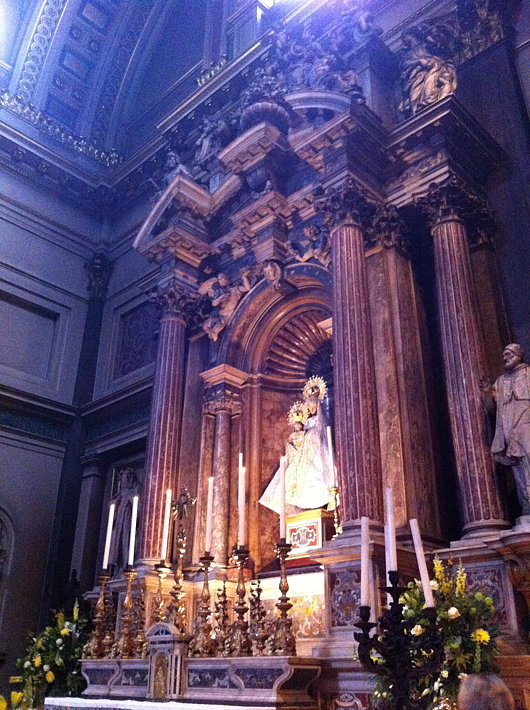
Don Bosco in London
Just went to venerate the relics of Don Bosco, which are doing a UK-wide tour organised by the Salesian order. There was quite a crowd waiting for the Saint’s earthly remains to be unveiled at 2 o’clock — suprising for early afternoon on a workday. Before the relics were even made viewable there were pilgrims huddled around the veiled reliquary, whom the organisers eventually had to shoo away in order to organise some proper veneration.
The faithful are able to venerate the relics at Westminster Cathedral from 2:00pm to 8:30pm today and tomorrow only, after which they will spend the next two days at St. George’s Cathedral in Southwark before returning to Italy.
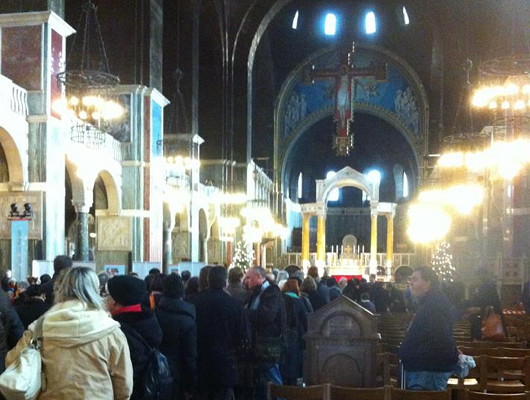
Cardinal Manning
Over at Reluctant Sinner, Dylan Parry has an excellent post on Cardinal Manning, the second man to serve as Archbishop of Westminster. Manning is all too often forgotten, despite being one of the most widely loved and respected men of his generation. His funeral, famously, was the largest ever known in the Victorian era. Besides his wisdom at the helm of England’s most prominent see, the good cardinal’s greatest legacy might be his influence on Rerum Novarum, the great social encyclical of Leo XIII. Dylan is planning on writing further on the subject of Cardinal Manning, giving us something to look forward to. (more…)
Saints in Heaven, Pray for Us!

There are events occurring very soon which have massive life-changing potential for your humble & obedient scribe, and which could go quite horribly wrong or astoundingly well.
I absolutely implore you to pray to all the saints in Heaven, and especially to whichever Guardian Angels may be relevant, to combine, conspire, pray, and intercede for my special intention.
Thank you in advance for all your prayers, and I will keep you all in my prayers as well.
Charles of Austria
TODAY IS THE first feast of Blessed Charles since the announcement last December that the cause for the canonisation of his wife, Zita of Bourbon-Parma, has been opened as well. In an age when most people in government and public leadership seem barely even decent, let alone saints, it is all the more important to seek the prayers and intercession of Charles and Zita — husband and wife, mother and father, Emperor and Empress — for the preservation of peace, the prevention of war, and the renovation of our families as well as our societies at large. (more…)
Journowatch: Headline vs. Story
In an article about the soon-to-be-canonised Australian nun, Mary McKillop, the Daily Telegraph exhibits a peculiar example of the lows of newspaper journalism today.
The headline boldly states “Australian nun ‘to be made patron saint of abuse victims'” only for the sub-headline — “An Australian nun who will be canonised by the Pope next month should be made the patron saint of clerical sex abuse victims, Catholics have suggested.” — to directly contradict this.
Is Mary McKillop “to be” the patron saint of the abused or has it merely been “suggested”? The headline-writer put the ‘to be’ in quotation marks, but the article doesn’t supply a single quotation or piece of evidence showing this decision has been reached, only a quotation suggesting it would be a wise course of action.
I’ve read numerous examples of newspaper articles offering contradictory facts unreconciled, but to do so before the article has even started seems particularly bizarre.
A little lack of logic on Pope Benedict from the Guardian’s John Hooper
Over at the Guardian (Britain’s best daily, whether you like it or not!), Rome correspondent John Hooper writes an informative article about the upcoming beatification of Spanish journalist Manuel Lozano Garrido (1920-1971). I’d never heard of “Lolo”, as the saintly journo was known both during his life and afterwards, and was happy to be introduced to yet another shining star of Spain’s happy glut of twentieth-century saints & blesseds.
Lozano Garrido, Mr. Hooper informs us, “wrote his first article for — and went on to edit — a magazine called Cruzada (Crusade). That was a pretty loaded title for a publication of the time because, in the language of the dictatorship, ‘cruzada’ referred to the campaign Franco pursued with ruthless and bloody determination against any Spaniard who dared to hold opinions much to the left of fascism.”
Up to a point Lord Copper! For a Christian periodical — written by Christian journalists, read by Christian people, in a Christian country — to have the name “Crusade” hardly seem loaded at all, despite the Spanish state’s contemporaneous use of the word cruzada. But this is incidental and entirely beside the point.
Mr. Hooper wonders where Lozano Garrido fits in to the bigger picture of Spanish journalism at the time because, Hooper claims, “by approving his beatification, Pope Benedict is sending a message to the world about the sort of journalism that he regards as worthwhile”.
Well, in a word: no. As Hooper admits, “Lolo” isn’t being beatified because of his journalism but because of his heroic virtues exhibited in the face of suffering. In a sense, his journalism has nothing to do with it. If he had been a baker of rye bread instead of a journalist, would we extrapolate that Benedict XVI is sending a message to the world about the sort of bread he regards as worthwhile? Of course not. It simply does not follow.
Relic of Blessed Charles in Catalonia
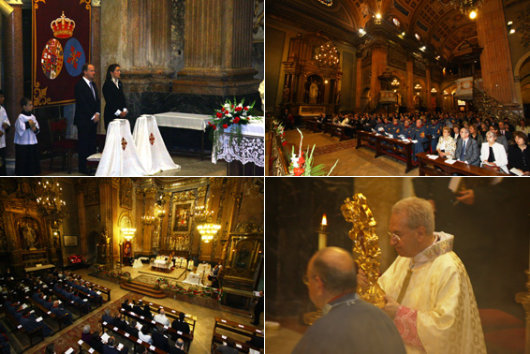
In October of last year, a relic ex ossibus of Blessed Charles I was formally received at the Basilica Church of Our Lady of Mercy & St. Michael Archangel in Barcelona, the capital city of the Spanish principality of Catalonia. The bone fragment is the first relic of the last Emperor of Austria, Apostolic King of Hungary, and King of Bohemia to be publicly venerated in the Kingdom of Spain. It was requested by His Grace the Bishop of Solsona, Don Jaume Traserra y Cunillera, at the request of the Catalonian Delegation of the Constantinian Order. The relic has been enshrined in the chapel of St. Michael the Archangel, alongside a portrait of the Emperor.
A grandson of Blessed Charles, HIRH the Archduke Simeon of Austria, attended (with his wife) as the representative of HRH the Infante Don Carlos, Duke of Calabria, the Grand Master of the Constantinian Order and head of the Royal House of Bourbon-Two Sicilies. Also in attendance were Lt. Gen. Don Fernando Torres Gonzalez (Army Inspector General), General Mainar Don Gustavo Gutierrez (Chief of the 3rd Sub-inspection Pyrenees and Military Commander General of Barcelona and Tarragona), as well as representatives of the Order of Malta, the Order of the Holy Sepulchre, various guilds and corps of Spanish nobility, and lay fraternities.
Hapsburg Hebraica
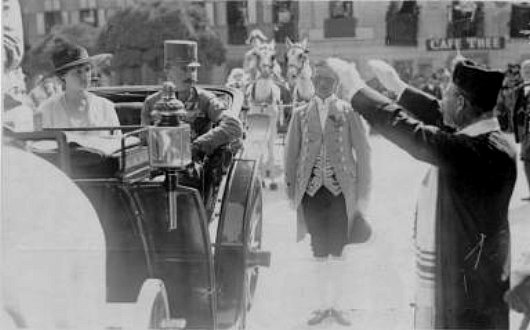
After the passing of the Hapsburg empire, which had been so protective of its Jewish subjects (especially compared to the regimes which succeeded it), numerous prominent Jews were received into the Catholic faith, perhaps having come to a full appreciation of precisely what they had lost. The subject of “Literary Jewish Converts to Christianity in Interwar Hungary” is worthy of further investigation (some graduate student should write a dissertation on just such a matter). I am no longer surprised when, in my researches, I come across yet another fascinating Hungarian Jew — be he a writer, playwright, poet, or patron — and discover, usually buried in some footnote, that he died a good Catholic.
St. Zita?
Church Opens Investigation into Sanctity of Zita of Bourbon-Parma, Wife of Blessed Charles and Last Empress of Austria-Hungary
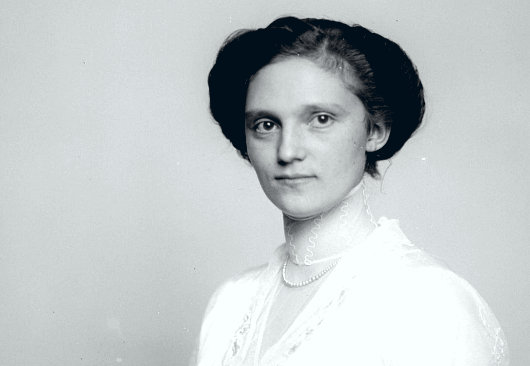
It was announced recently that Mgr. Yves Le Saux, Bishop of Le Mans in the traditional province of Maine (Pays de la Loire), France has opened the cause for the beatification of Zita of Bourbon-Parma, the long-lived wife of Blessed Emperor Charles of Austria. Charles, the last (to date) Emperor of Austria, Apostolic King of Hungary, and King of Bohemia (&c.), died in exile in Madiera in 1922, aged just thirty-four years. Zita Maria delle Grazie Adelgonda Micaela Raffaela Gabriella Giuseppina Antonia Luisa Agnese de Bourbon-Parma, meanwhile, was born in Tuscany in 1892 and lived a long life, giving up the ghost in March 1989, and interred in the Capuchin vault in Vienna following a funeral of imperial dignity.
“The process was opened in Le Mans,” Gregor Kollmorgen of TNLM reports, “and not in the Swiss diocese of Chur, where the Empress died twenty years ago in 1989 in Zizers, with the consent of Msgr. Huonder, the Bishop of Chur, and the permission of the Congregation for the Causes of the Saints, because within the diocese of Le Mans is situated the Abbey of Solesmes, well known to NLM readers for its leading rôle in the early liturgical movement in the nineteenth century, especially regarding Gregorian chant, and which was the spiritual center of the Servant of God Zita, her home among her many exiles.”
Zita’s relationship with Solesmes dates back to 1909 when she first visited its sister-abbey of St. Cecilia on the Isle of Wight in England. She became an oblate of the Abbey of Solesmes itself in 1926. Her daily life after the exile & death of her saintly husband included the Rosary, hearing multiple daily masses, and praying part of the Divine Office. (more…)
Search
Instagram: @andcusack
Click here for my Instagram photos.Most Recent Posts
- Burns Tower April 19, 2024
- Patrick in Parliament March 18, 2024
- Articles of Note: 13 March 2024 March 13, 2024
- Cambridge March 9, 2024
- Taken on Trust March 4, 2024
Most Recent Comments
Book Wishlist
Monthly Archives
Categories

